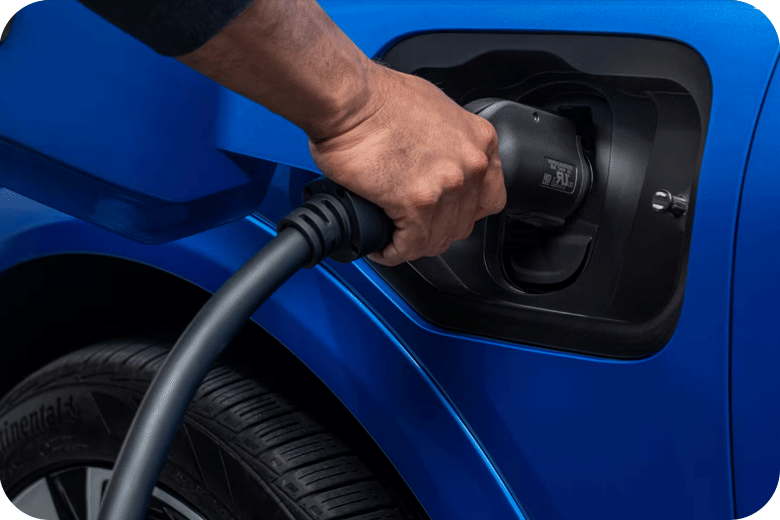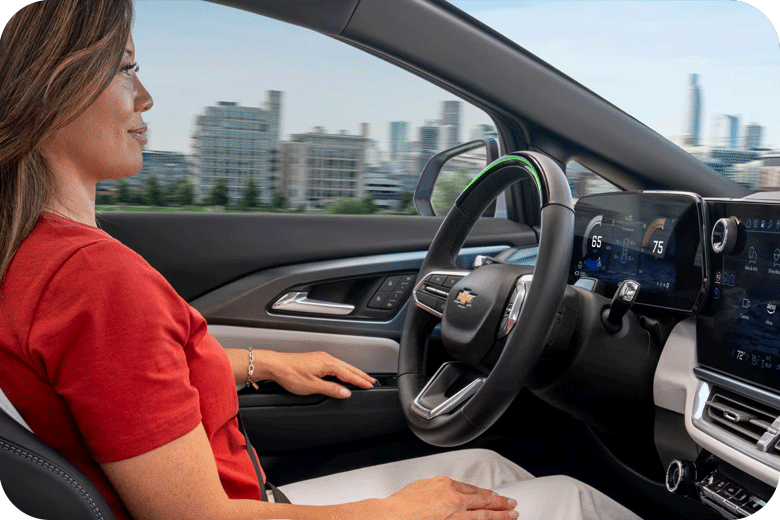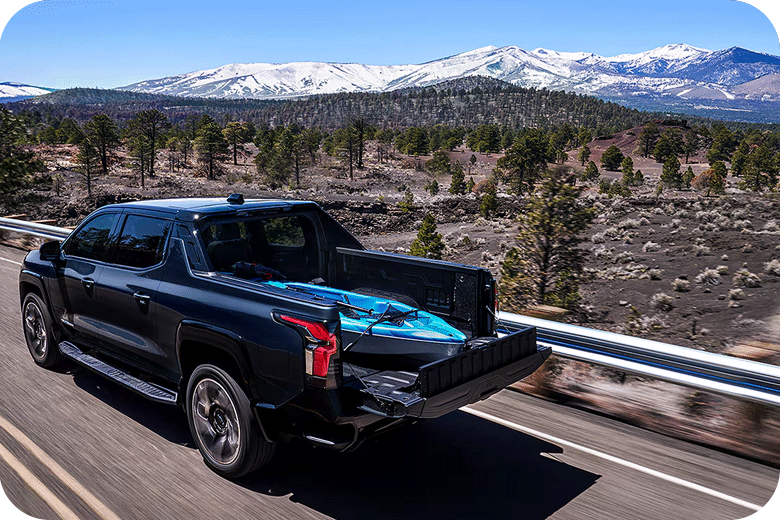NACS DC Adapter
With the introduction of the NACS DC adapter, GM electric vehicle drivers now have access to 17,800+ Tesla Superchargers across Canada and the U.S. NACS DC-compatible chargers and Tesla Superchargers offer the fastest available charging levels, getting your vehicle back on the road with time to spare. This portable adapter fits in your glove compartment, making it the ultimate convenience for all drivers, whether you’re driving around town or planning a long road trip.
Your Vehicle App
With your vehicle app, powered by OnStar Connectivity Plans, it's easier than ever to find compatible charging stations, start a session and get back on the road faster. Through this app, you can do the following:
• See nearby charging stations and get real-time availability.
• Monitor your vehicle’s battery and charging status to see how much power your EV has left until you need to recharge.
• Map your route, locate charging stations, plan your stops and get directions for when your EV needs to charge.
• GM’s network partners allow you to charge on your terms and pay as you go when you activate public charging in your vehicle mobile app.
EVs make for better long-term investments than gasoline vehicles. EV maintenance typically costs less due to the lack of a fuel engine and fewer mechanical parts. This means there are less components to inspect and repair, and oil changes are no longer necessary. Lastly, charging your EV costs less than gasoline fuel, making EVs a superior choice.

Electric vehicles can benefit from being charged overnight, during work or other daily activities, which saves you time by eliminating trips to gas stations. Additionally, the lack of a fuel engine means you experience less vibrations, resulting in a quieter and smoother ride for the driver and passengers alike.

EVs do not produce their own emissions, leading to a much smaller carbon footprint. This is especially true for certain regions in Canada that use hydroelectric power, where fossil fuels and gas emissions play a much smaller role in getting your vehicle back on the road.

Many governments offer rebates and tax credits to offset higher purchase prices that often come with electric vehicles. Depending on your location, you may qualify for federal, provincial or local incentives, which makes purchasing an electric vehicle even more rewarding.




* Charging capacity varies based on battery condition, output of charger, vehicle settings and battery temperature.
** Quickest charging capacity is limited in Canada, requiring the use of public DC fast chargers providing at least 350 kW, which may not be available in certain areas. Charging capacity varies based on battery condition, output of charger, vehicle settings and battery temperature.


